Photo essay: Vietnam, 1992
I was lucky to be amongst the first few independent travellers allowed to visit this dazzling, dynamic country. These images capture a nation on the brink of change.
Vietnam in 1992 was one of the greatest travel experiences of my life. I’ve written before about the thrill of arriving in Saigon during the festival of Tết after which I spent a month travelling overland to the capital, Ha Noi. The country had been closed to independent travellers for 17 years after the end of the American war, and was then on the brink of radical, rapid change.
A note on the photography: I was using a Canon AE1 SLR, shooting on Fujichrome Velvia 50, mostly with a 50mm lens. I had prints made from the original transparencies, and what you see below are scans of those prints. I haven’t adjusted any of the colouring.
Like most Vietnamese I met, these cyclo drivers in Hoi An were delighted to pose for a photograph. I love their laughter, their jaunty hats and their languid ease with each other, one even sitting on his friend’s lap.
In Ha Noi, I stumbled on a wedding where the bride arrived in a rather dilapidated white wedding car decorated with flowers. The couple pose awkwardly for a local photographer, framed by the car’s back window. I saw very few private cars anywhere in Vietnam.
A fruit and vegetable market in Ha Noi and a typical street scene: washing strung from the shuttered windows of French colonial buildings, no advertising hoardings, no phone wires.
On the waterfront at Hoi An - which today is packed with tourists day and night - these women selling fish burst into fits of bemused laughter when I asked to take their photograph.
A lone aircraft on the tarmac at Ha Noi airport. I was there to catch a flight to Vientiane aboard an ancient Russian-built Tupolev jet. As we descended, the cabin filled with steam, but we landed safely.
Hạ Long Bay had yet to be developed for modern tourism and the local people were as curious to see us as we were to see them. The only place to stay in town was a Russian workers’ hostel where I shared a room, sleeping on a mat on a concrete floor.
The railway station in Hue, from where I took an overnight train to Ha Noi. It wasn’t a comfortable journey: the bunks were planks of wood with no bedding and cold air blasted through the broken windows. As we passed through the countryside, children threw rocks at the carriages.
It wasn’t unusual in the countryside to see buses like this one, powered by a wood-burning stove. Breakdowns were commonplace.
In spite of the hardships, the people were a constant delight. This old man was happy to pose for a portrait at a Chinese temple in Hoi An.
Ha Noi in winter was an austere, grey city but it looked a little warmer under the yellow light bulbs that were switched on as dusk fell. The sign translates as: “Sticky rice with sausage, chicken heart and liver porridge. Instant noodles”
Hoi An was by far the most photogenic town I visited. I love this shot of a barefoot boy with an armful of corn and a smiling old lady preparing food. If you’ve ever taken pictures of cute kids on your travels, you might enjoy my essay, All those travel photos of other people's children. Where are they now?
In Nha Trang - now a popular beach resort - local people were happy for me to photograph a back-street cock fight. The two women in the top right corner also appear to be squaring up to each other.
An elegant woman buys ice cream for her young daughter in Hoi An.
At the market in Da Nang, an old woman curls up for an afternoon nap while another stall holder tucks into a bowl of noodles.



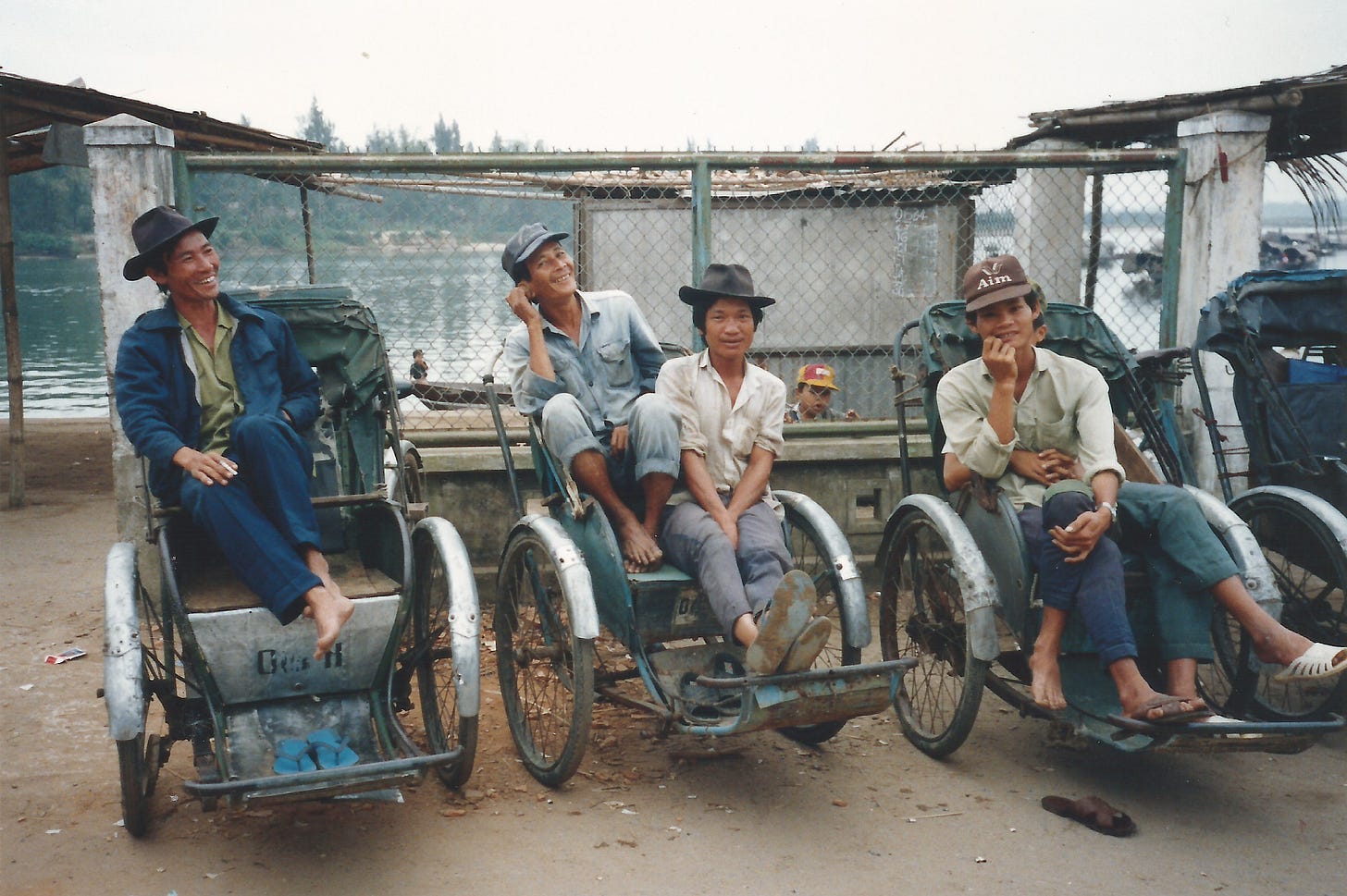


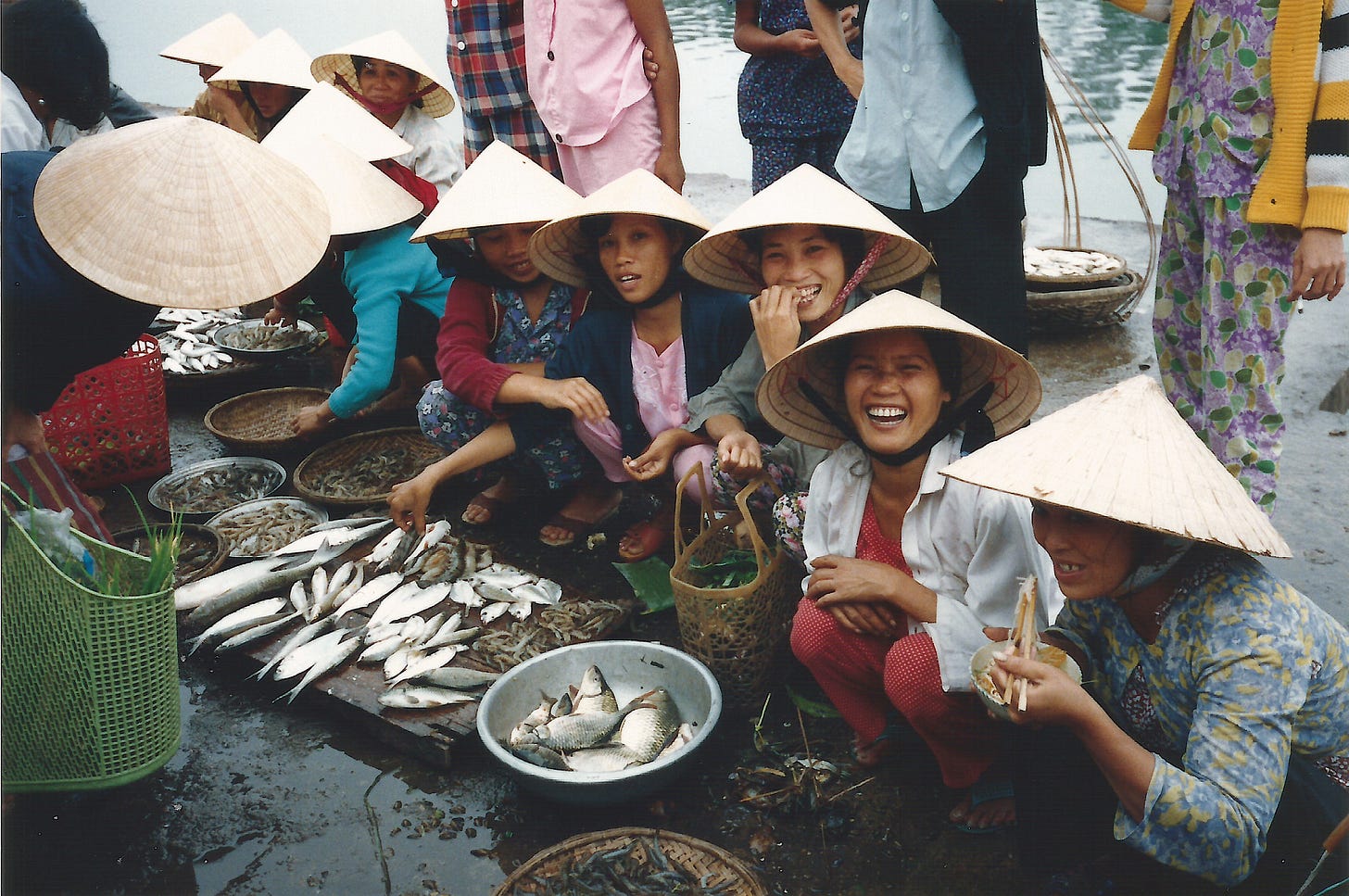



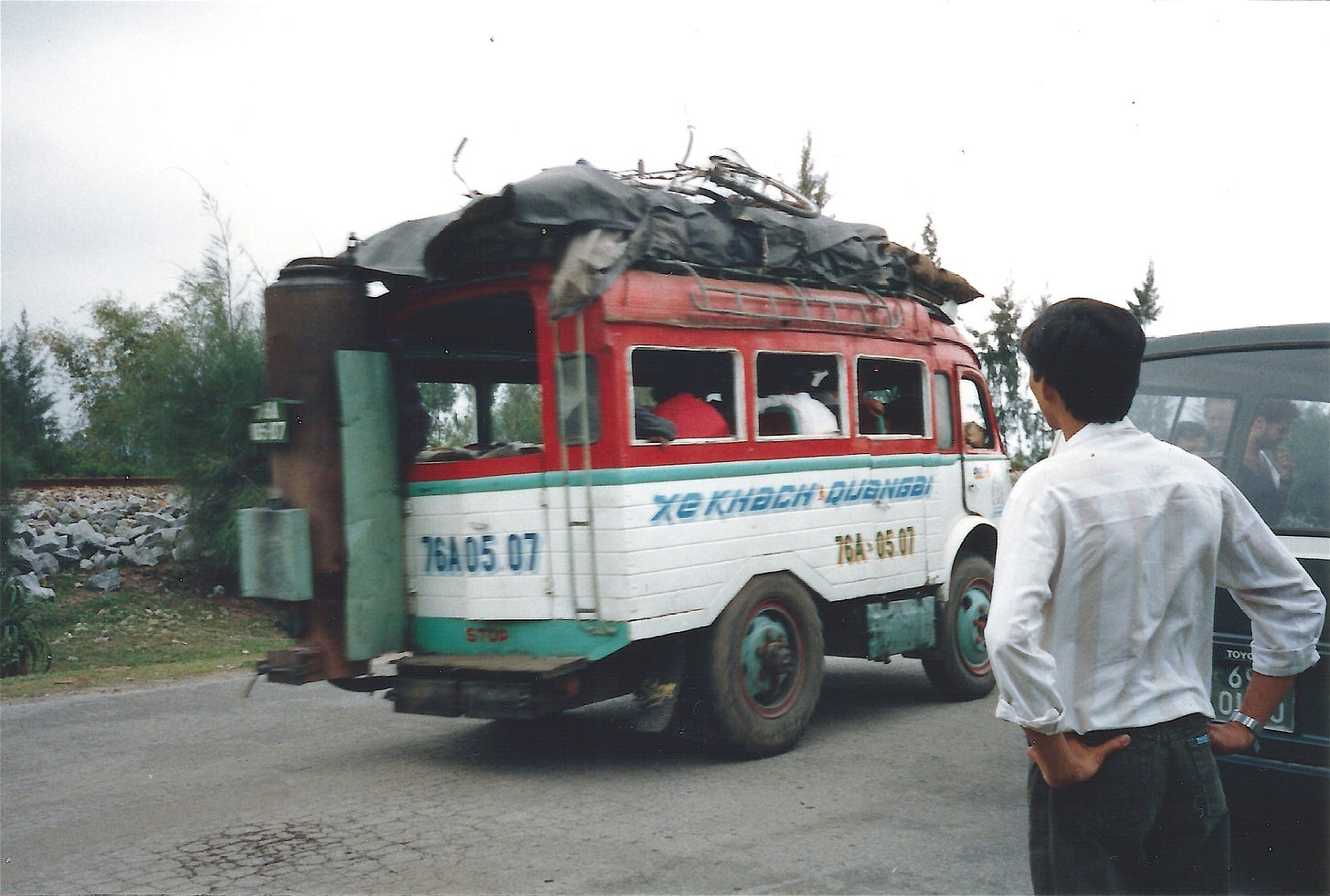




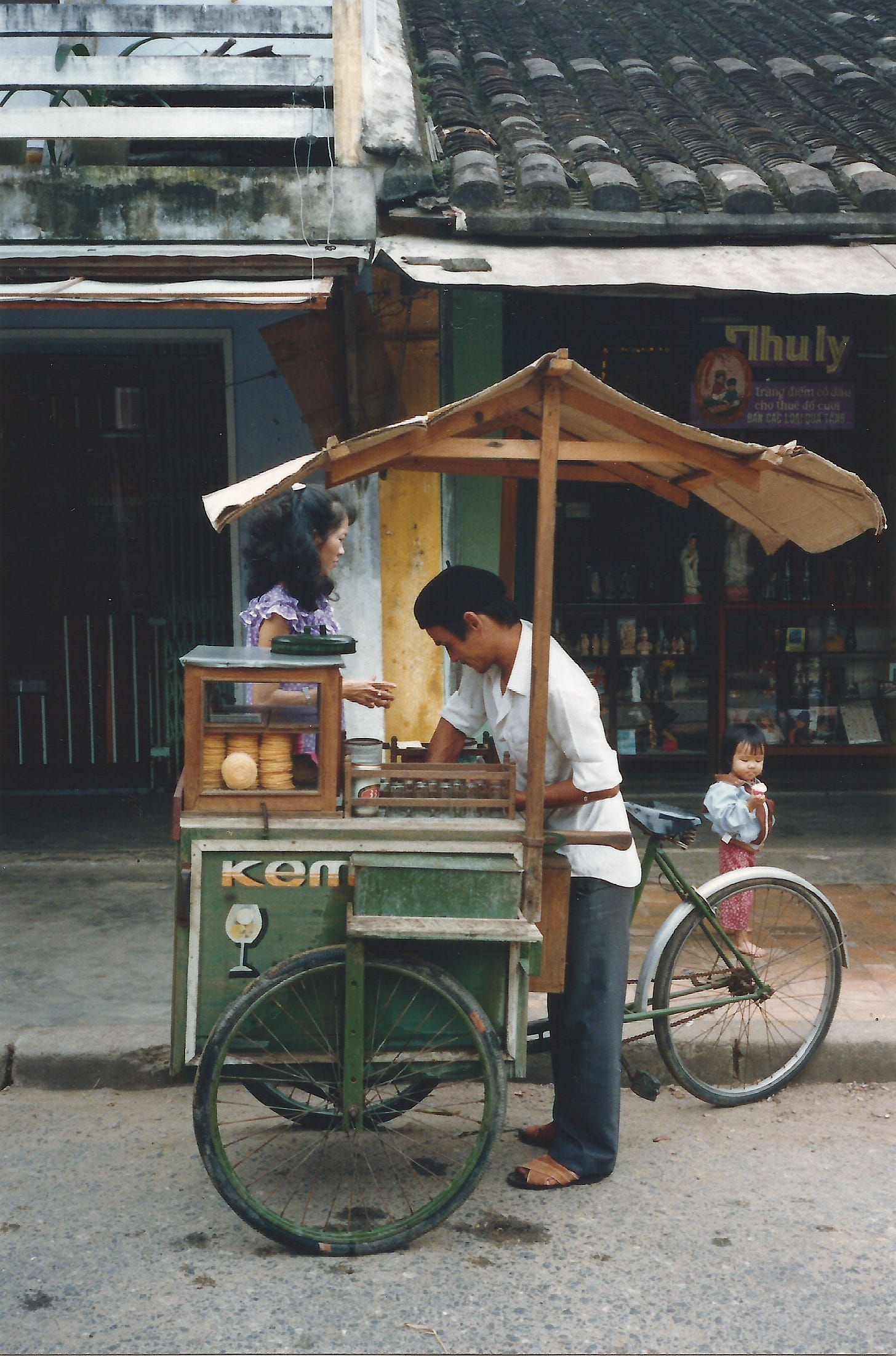
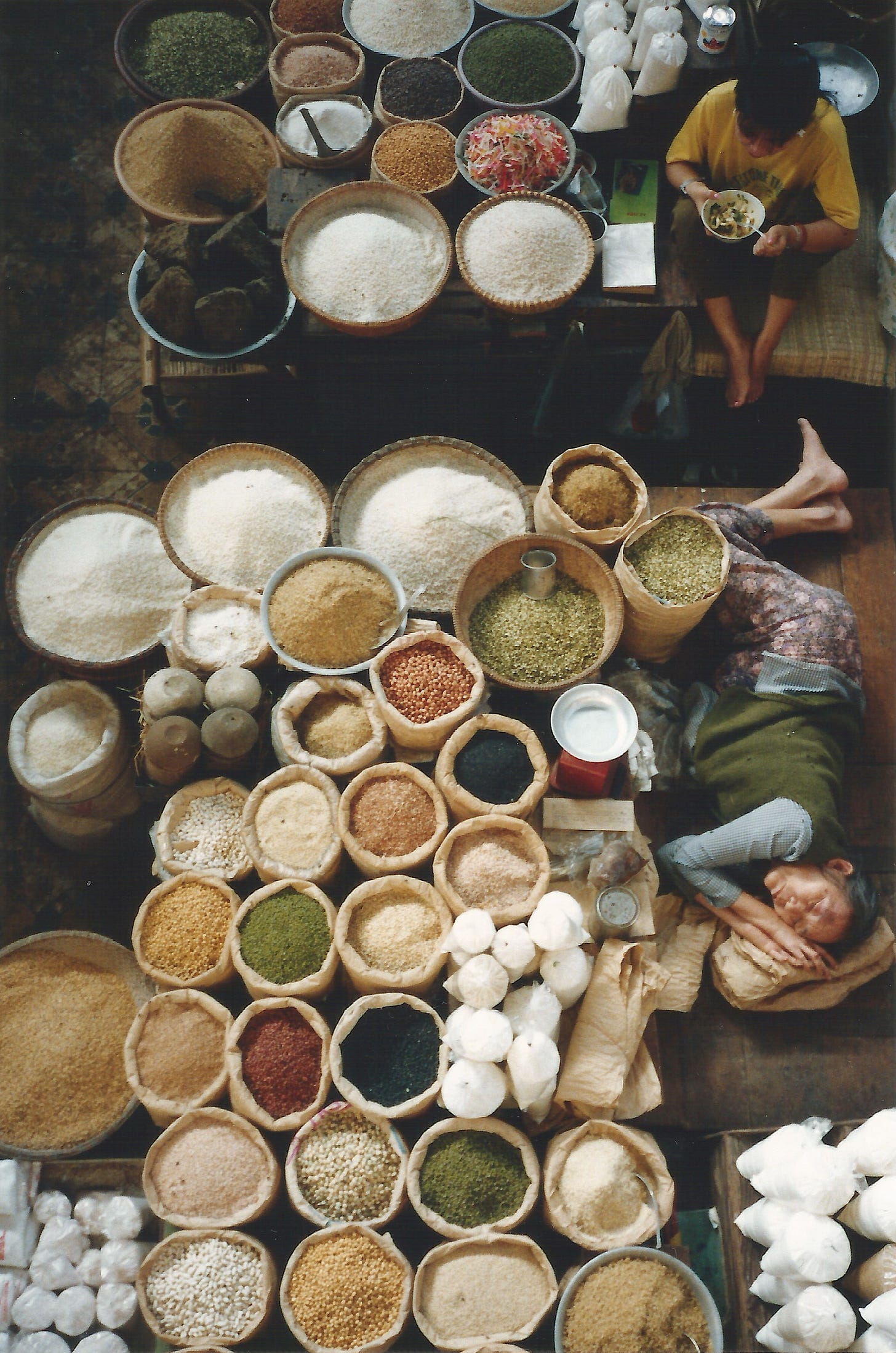
Some of these images - and a few more - were featured in the excellent magazine Saigoneer: https://saigoneer.com/vietnam-heritage/26753-in-1992-vietnam,-the-streets-were-brimming-with-love-and-life
Great pics! That xoi stall is probably exactly the same today!